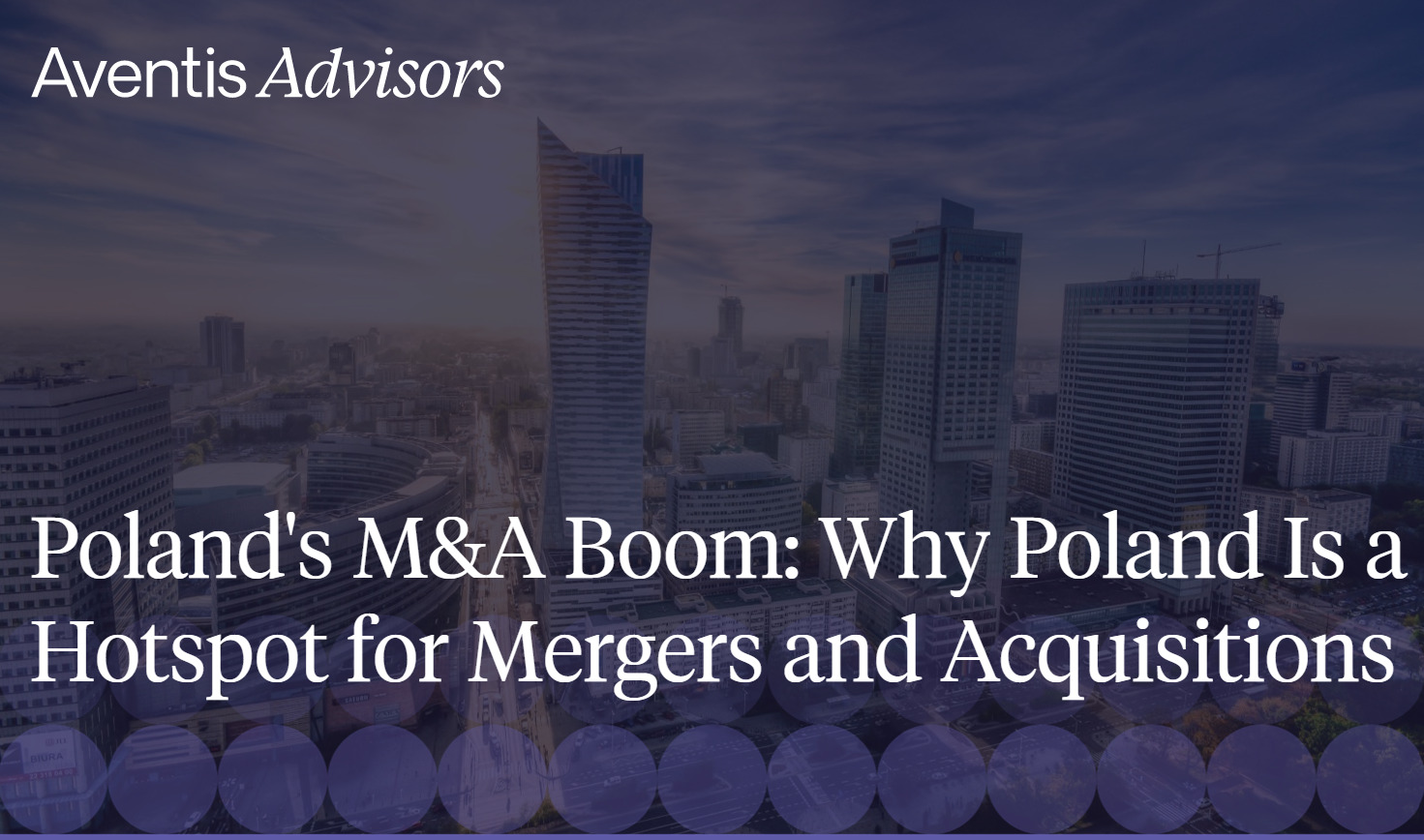Romania has undergone a remarkable economic growth trajectory over the past decades, surpassing most Western European countries. With its well-diversified and rapidly expanding economy, the nation has become a fertile ground for mergers and acquisitions (M&A), and we are seeing a growing momentum in both cross-border and domestic transactions.
This blog post will explore the underlying trends shaping Romania’s M&A landscape. Our analysis will encompass key areas, including the dynamics of overall M&A volumes, the level of cross-border acquisitions, which are the most active sectors, and many more. Moreover, we will explore some of the key macroeconomic elements of Romania that allure businesses to expand their operations in the country.
Overview of Romania’s M&A Market
To comprehensively analyze Romania’s M&A market evolution, we examined all the deals from 2003 to 2022. Throughout these two decades, 1,507 deals have been executed in Romania.
Total M&A deals in Romania
Between 2003 and 2022, Romania experienced remarkable growth in total deal volumes, with a CAGR of 12.3%. The number of deals per year surged from 16 to 164 over this period. Nevertheless, it is important to note that several fluctuations were observed throughout the analyzed timeframe, and a significant driver of growth took place during 2021’s risk-on environment.
Following a substantial year-on-year decline in deal volumes in 2020 due to the impact of the pandemic, M&A activity witnessed a remarkable surge in 2021. Total deal volumes more than doubled over the 12 months period, and have maintained this heightened level throughout 2022. With Romania’s economic resilience, attractive labor market, and promising growth opportunities, we anticipate that M&A activity will remain above historical levels.
Cross-border vs. domestic acquisitions
Throughout most of the analyzed period, the level of cross-border activity in the Romanian M&A market has exhibited stability, hovering around 66% of total deal volumes in most years. The nation’s fast-growing and resilient economy and favorable labor characteristics present compelling reasons for foreign buyers to engage in the acquisitions of local companies. Moreover, favorable changes in Romanian law and the country’s membership in the European Union are significant draws for foreign investments as acquirers seek to establish and expand their presence within Europe.
Delving deeper into the analysis of foreign buyers, the acquirers based in the United States have emerged as the frontrunner with an impressive 145 deals executed between 2003 and 2022. Noteworthy sectors where U.S.-based buyers displayed remarkable activity include software, real estate, and energy.
During the same period, we observed strong momentum from major Western European countries, such as the United Kingdom, Germany, and France, in executing cross-border transactions. Additionally, two Central and Eastern European countries, Poland and Czechia, were on Romania’s Top 10 list of foreign acquirers.
M&A volumes by sector
Deal flow distribution across various sectors exhibited a balanced and robust pattern, with no notable concentration in any particular area. In terms of industry breakdown, energy deals held the largest share, accounting for 9.0% of the total, followed closely by software (8.6%), financials (7.4%), and industrials (6.1%).
Most active sectors in acquisitions
Among the sectors with the highest level of activity, measured by total deal count, software and medical stood out with their relatively steady growth over the past seven years. Software deals in particular surged significantly since 2020, signifying the potential of Romania’s technology sector. From 2021 onwards we also saw a remarkable uptick in energy deals, particularly in renewables.
While not explicitly depicted on the chart, it is noteworthy to highlight the significant surge in deals in the real estate sector in 2021 and 2022. During these two years, the industry experienced a notable upturn, culminating in the closure of 25 deals in 2021 and 10 deals in 2022. Conversely, industries that exhibited a slowdown in deal flow over the analyzed two decades include media and manufacturing.
Financial vs. strategic investors
The involvement of financial investors, predominantly venture capital and private equity firms, exhibited a significant level of volatility from 2003 to 2018. However, starting in 2019, a substantial upswing in deals spearheaded by financial acquirers became evident. Notably, private equity investments in Romania gained significant momentum over the years, reflecting their growing interest in the market.
Furthermore, interest from strategic acquirers experienced substantial growth in absolute terms during 2021 and 2022. This indicates a heightened attraction towards the Romanian market, with strategic buyers recognizing its immense potential and value. The convergence of financial and strategic investors underscores the increasing confidence and enthusiasm surrounding M&A opportunities in Romania.
Overview of Romania’s Economy
Highlighting the drivers behind Romania’s robust mergers and acquisitions activity, the country’s favorable macroeconomic environment, significant foreign direct investments, and developed capital markets emerge as prominent catalyst for acquisitions. Taking a closer look at Romania’s economy, exceptional GDP growth and an appealing labor market are clear standouts.
Outstanding GDP growth
Commencing with GDP growth, Romania boasts a rapidly expanding and resilient economy, ranking as the second-largest in the CEE region, trailing only Poland. Between 2003 to 2022 the CAGR of its GDP reached 8.7%. This growth rate surpasses the CEE region’s average and significantly outperforms the averages of the European Union (EU) and the Organization for Economic Cooperation and Development (OECD).
Attractive labor market
Romania’s labor market presents an enticing opportunity for mergers and acquisitions, particularly for foreign buyers hailing from Western European countries and the USA. The country boasts the second-largest population in the CEE region, second only to Poland, with a considerable 19.3 million people.
Most importantly, labor costs in Romania play a pivotal role. Romania has the second-lowest labor costs within the EU, trailing only Bulgaria. Eurostat’s 2022 report revealed an average hourly wage of a mere 10 EUR, presenting a remarkable 68% discount when compared to the EU average of 31 EUR. This stark difference in labor costs makes Romania an incredibly cost-effective destination for businesses seeking to expand or establish a presence in the European market.
If you’re interested in gaining a broader understanding of the M&A activity in Central and Eastern Europe, check out our blogpost on M&A in CEE. In addition to uncovering the countries within the region that garner the highest acquisition activity, our analysis provides valuable insights into median transaction value and the “CEE discount” in valuation multiples.
M&A in Central and Eastern Europe
Aventis Advisors Will Help You Navigate the M&A Landscape in CEE
The growing number of deals in Romania has raised the demand for CEE-based M&A advisors. By partnering with an M&A advisor in CEE, you can gain valuable insights into local Romanian companies that could be ideal matches for your business. Advisors’ expertise is particularly beneficial in cross-border transactions. They can help foreign parties understand the market dynamics and legal and regulatory frameworks related to M&A, including areas like corporate income tax, and overcome language and cultural barriers.
About Aventis Advisors
Aventis Advisors is an M&A advisor for technology and growth companies based in CEE. We have accumulated extensive expertise in assisting international buyers with the unique complexities of investing in CEE. With our access to local databases and networks, we can provide valuable insights and support in selecting and closing the right deal for you. Our experience connecting foreign investors with CEE-based targets enables us to handle all your investment needs, from navigating complex financial requirements to bridging cultural gaps.
Contact us if you want to learn more about M&A opportunities in Romania. We would happily answer any of your questions and find the best deals for you.





